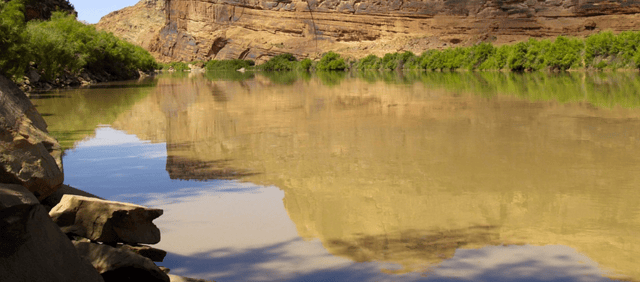Despite two warnings of an environmental risk, the Environmental Protection Agency (EPA) caused the release of wastewater while attempting to add a tap to the tailing pond for a mine in Colorado.
The spill occurred at the Gold King Mine near Silverton, Colorado, on August 5, 2015.
Workers accidentally destroyed the dam holding back the pond, spilling more than three million US gallons (11 ML) of polluted mine wastewater and tailings, including heavy metals such as cadmium, zinc, beryllium, mercury and lead, as well as other toxic elements, like arsenic into Cement Creek, a tributary of the Animas River in Colorado. The Animas also runs through Utah and New Mexico.
The resulting spill turned the Animas River mustard yellow in the initial plume. Oxidation of iron caused the yellow color. The chemical processes involved in acid mine drainage are common where subsurface mining exposes metal sulfide minerals like pyrite into the water and air. The governor of Colorado, John Hickenlooper, declared the river area a disaster zone and closed it to the public on August 8, 2015.
In spite of fears of dire consequences, there wasn’t as big a fish die-off in the wastewater plume. By August 22, the water testing showed contamination levels had fallen back to pre-spill levels. At that time, recreational use of the river resumed.
Long term effects
While this is good news, experts fear that the heavy metals that settled into the riverbed might be hazardous in the long run.
"The long-term effects are the concern that every time we have some sort of a high-water event, whether a good rain in the mountains or spring runoff next year, that's going to stir up sediments and remobilize those contaminants that are sitting at the bottom of the river right now," said Ty Churchwell, Colorado backcountry coordinator for Trout Unlimited.
are sitting at the bottom of the river right now," said Ty Churchwell, Colorado backcountry coordinator for Trout Unlimited.
Other experts say that even if the sediments are stirred up, the water will be diluted enough not to cause problems.
By late August there were still concerns in the agricultural sector concerning water used for irrigation and farm animals. The EPA suggested farmers test all well water in the region to avoid possible lawsuits.
Leadership of the sprawling Navajo Nation also voiced fears of long-term impact as the contaminants from the Animas flowed into the San Juan River, which flows for 215 miles through Navajo land.
Land of 22,000 abandoned mines
There are 22,000 abandoned mines in Colorado, according to officials. Many abandoned mines throughout Colorado are also known to have problems with acid mine drainage.
At the time of the accident, the EPA was working at the Gold King Mine to stem the leaking mine water going into Cement Creek. They were building a concrete bulkhead to plug the leak and planned to add pipes that would allow the slow release and treatment of the water. However, the crew's machinery breached a wall that was holding back the wastewater.
Through a Freedom of Information Act request, Associated Press obtained EPA files indicating that U.S. government officials "knew of ‘blowout’ risk for tainted water at mine" that could result from the EPA's intervention.
Two fair warnings
The information was known to EPA authorities through a June 2014 work order that read "Conditions may exist that could result in a blowout of the blockages and cause a release of large volumes of contaminated mine waters and sediment from inside the mine, which contain concentrated heavy metals.” A May 2015 action plan for the mine that also noted the potential for a blowout.
An EPA spokeswoman was not able to state what precautions the EPA took against the warnings.
Talon’s office located in Fort Collins, Colorado specializes in remediation services to the area.
If you need Environmental Consulting, Environmental Drilling, Air Permitting, Spill Management, Oilfield Construction, Environmental Engineering, Safety Training or General Contracting services, contact us at Talon/LPE. We work throughout Texas, Oklahoma, Colorado, and New Mexico. We also offer safety and training classes.

